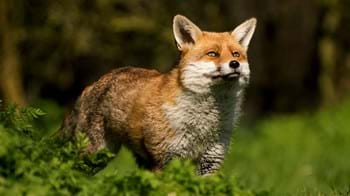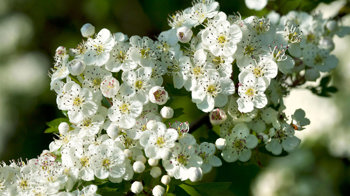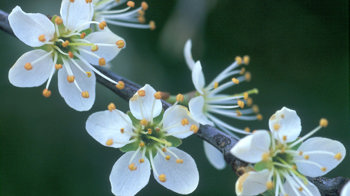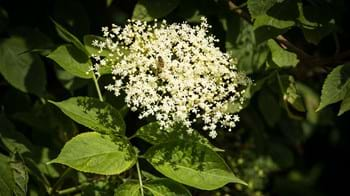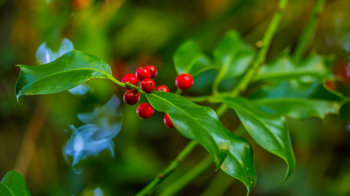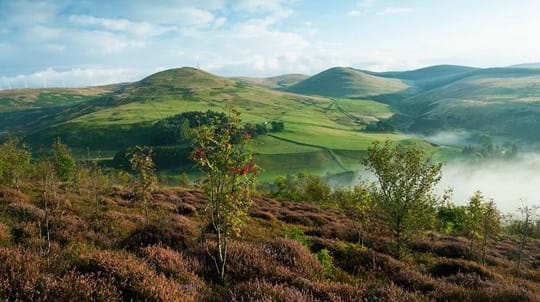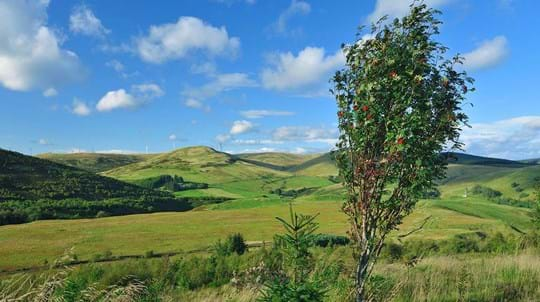
Geordie's Wood
Muckhart

Woodland Trust wood
243.50 ha (601.69 acres)
NN992021
Explorer 369
OS Landranger 58
Geordie’s Wood is part of Glen Devon Woodlands, the collective name for three separate native woodlands in the area – Glen Quey, Glen Sherup and Geordie’s Wood. Wild, remote and beautiful, these woods contain some of the best scenery central Scotland has to offer.
With vast open spaces, high hilltops and spectacular views, along with iconic wildlife like the red squirrel and the elusive pine marten, a visit to Geordie’s Wood is sure to be an unforgettable experience.
Features
- Parking nearby
- Public access
- Waymarked walk
- Grassland
- Moorland
- Broadleaved woodland
How to get to Geordie's Wood
Geordie’s Wood is at the southern end of Glen Devon Woodlands. It lies adjacent to the village of Muckhart and skirts around the hillside to Glenquey. The northern end Geordie’s Wood is 16km (10 miles) south of the town of Auchterarder.
The A823 Dunfermline to Crieff road passes through Glendevon and there are a number of points on the road where you can park. Please do not drive up the private single track roads to the Glenquey and Lower Glendevon Reservoirs.
The best way by car to Geordie’s Wood is via the A823 Dunfermline to Crieff Road and parking at the Castlehill Reservoir lay-by. Geordie’s Wood can also be accessed from Pool of Muckhart (A91). Simply park in the village and walk up the access road to the church and then follow the path to the left of the church.
The nearest train stations are Gleneagles, 13km (8 miles) from the wood, and Alloa, 18.5km (11.5 miles) from the wood.
Visit National Rail for more information.
The nearest bus stop is near the old toll house in Muckhart, 1.7km (1 mile) from the wood.
Visit Traveline Scotland for more information.
Facilities and access
There is a core path at Geordie’s Wood – a section of the waymarked Reservoirs Trail. There are also other waymarked routes of varying lengths, as well as many informal paths, most of which are unsurfaced and can become muddy in parts.
The site ranges from gentle, low ground with easy, mainly unmarked walks, to the higher hilltops with steep and exposed ground with no formal paths. Small burns are, in general, not bridged. Path surfaces are too soft for horses or bicycles, with the exception of the Glen Quey drove road which, when dry in summer, would be suitable for both over most of its length.
Although access from the public road is not directly onto Woodland Trust Scotland land, it is well signposted, and within a short distance you will come across our welcome signs.
Thanks to the efforts of the Muckhart Nature Park Committee, Woodland Trust and Ochils Landscape Partnership, younger visitors can enjoy a buggy-friendly wildlife trail and pond at Muckhart Nature Park – which is located at the southern entrance to Geordie’s Wood.
For access to the main area of Geordie’s Wood it is best to park at the lay-by on the A823 alongside Castlehill Reservoir.
The lay-by also provides access to Glen Quey and Glen Sherup via the Reservoir Trail. The southern part of Geordie’s Wood is accessible by parking in Pool of Muckhart, walking up to the church and taking the path to the left of the church.
There are no public toilets near the site. The café and pub in the village do however have toilet facilities for customers, with access for wheelchair users.
Wildlife and habitats
Animals
Geordie’s Wood is home to a variety of intriguing wildlife including the red squirrel, pine marten and several types of bat. There is often a good chance of spotting roe deer, and a patient walker might even encounter raptors swooping overhead.
Trees, plants and fungi
Geordie’s Wood was planted with a diverse mixture of native tree species, including silver and downy birch, sessile and pedunculate oak, alder, willow, hazel, holly, cherry, rowan and some native conifers - juniper and Scots pine. Grassy areas are full of wildflowers in warmer months, including meadow buttercup, red campion, oxeye daisy and bird’s-foot trefoil.
Habitats
This extensive mix of habitats, including open ground, grassland, moorland and new native woodland, is home to a wide range of animal species.
About Geordie's Wood
History
Earthbanks from different historical periods have been discovered on the site following surveys and archaeological work. Other features include signs of buildings, field systems and a small farmstead, indicating the land has an agro-industrial past.
Geordie's Wood is named after a local sheep farmer who previously owned the ground. The name of the local village of Muckhart comes from the Gaelic ‘Muc Airde’, meaning ‘pig height’ – a reference to the wild boar which would have roamed this area around 600 years ago.
We acquired the wood in 2000.

A lasting legacy
This wood is just one of many to have been protected by gifts in wills, securing it for generations to come. Your legacy gift could also make a real difference to woods, trees and wildlife.
Learn what your gift could meanThings to do in Geordie's Wood
Walking
Whether it’s a thirty-minute stroll or a five-hour hike, Glen Devon Woodlands offers a range of walking routes to suit everyone – from the easy 2km (1.2 miles) Castlehill Lower Loop walk in Geordie’s Wood to the more challenging 14km (8.7 miles) Reservoirs Trail which snakes through all the Glen Devon Woodlands and encounters several reservoirs on the way. Just follow one of the coloured waymarked routes.

Visiting woods
Walking dogs in our woods
Dogs are welcome for walkies in our woods. Take a look at our tips and guidelines for ensuring we keep our woods safe and special for dogs and wildlife.

Visiting woods
Events
Discover events at our woods and the festivals and fairs you can find us at soon.
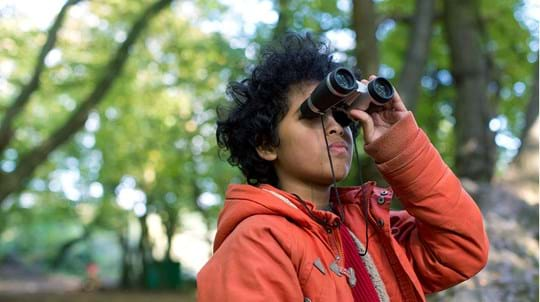
Visiting woods
Things to do in the woods
Go on an adventure. Get closer to nature. Uncover history. Discover ways to explore the UK's woods whatever the season.
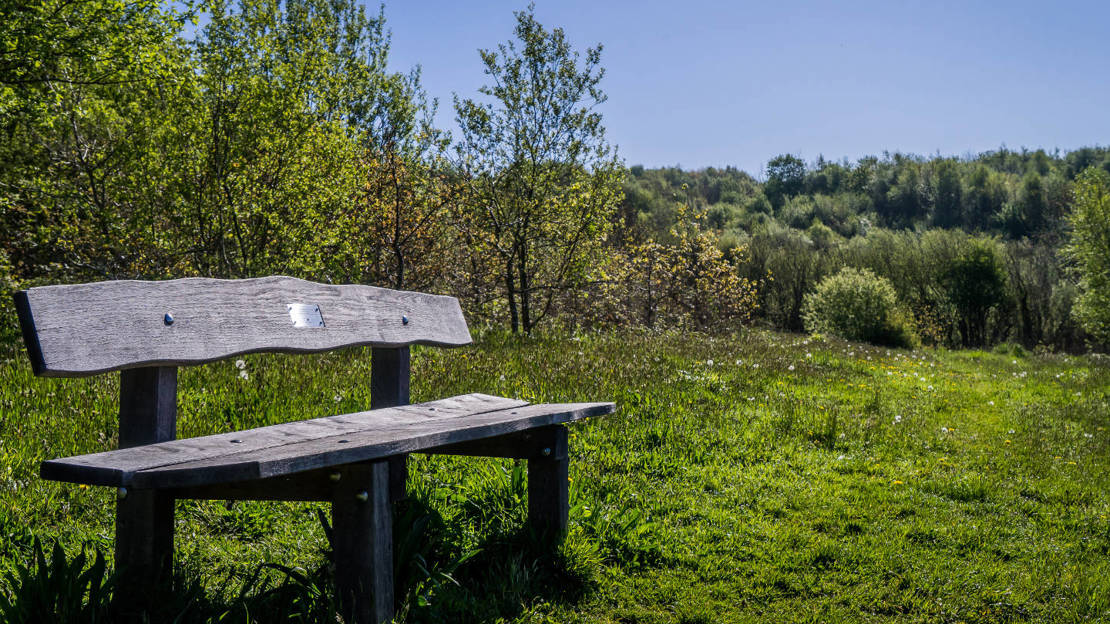
Dedicate at this wood
This wood is one of more than 50 across the UK where it's possible to dedicate trees, benches or larger areas of woodland. Mark a special occasion or celebrate the life of a loved one with a meaningful gesture that lasts.
Choose a dedication



















